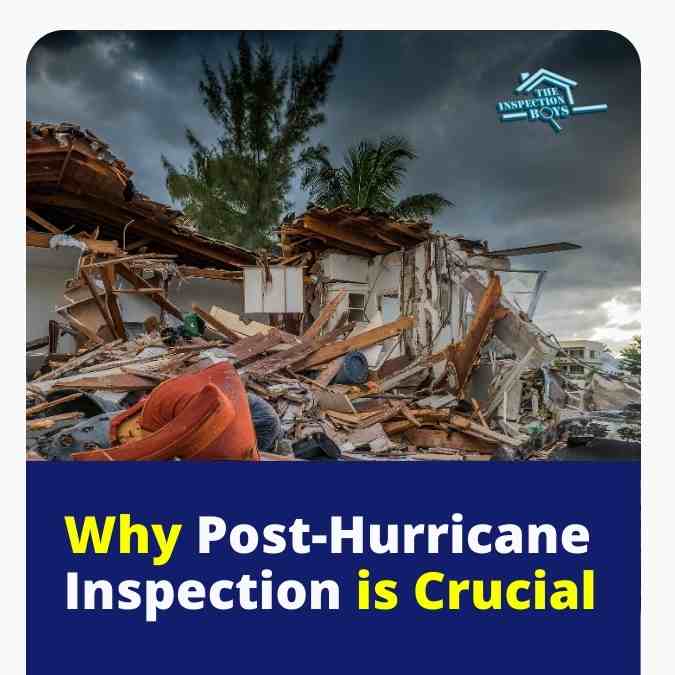Hurricanes can cause extensive, sometimes unseen, damage to homes and properties. After a storm, it’s tempting to think a quick look around the property is enough to assess any harm. However, a detailed post-hurricane inspection is vital to uncover hidden damage that could lead to bigger issues down the road.
Unseen Structural Damage
One key reason for a thorough inspection is to identify structural damage that isn’t immediately visible. Hurricanes bring not just high winds and heavy rains, but also the risk of flooding and tornadoes, which can impact a home’s foundation, roof, and walls. While everything might look fine on the surface, there could be serious underlying issues such as weakened support beams or compromised roofing materials. These problems, if not addressed, can worsen over time, eventually leading to costly repairs.
A trained home inspector can spot potential issues like foundation cracks, roof leaks, and weakened load-bearing walls—things an untrained eye could easily miss. Early detection ensures repairs can be made before the situation gets worse.
Flooding and Water Damage
Flooding is another major concern following a hurricane, especially in areas like South Florida, where heavy rains can quickly cause water to rise. Even homes that don’t experience obvious flooding may still suffer from water damage as rain seeps into cracks in the roof, walls, or foundation. If left untreated, this can lead to mold growth, which not only damages property but also poses health risks to occupants.
During a post-hurricane inspection, moisture levels are checked to pinpoint any areas where water has intruded. This allows homeowners to fix leaks and prevent mold from spreading.
Electrical Hazards
The impact of hurricanes extends to electrical systems as well. Floodwaters and strong winds can damage outdoor wiring, and water can get into electrical panels. This type of damage is especially dangerous because it isn’t always immediately apparent but can lead to electrical fires or shocks if ignored.
A post-hurricane inspection will assess the electrical system for any potential hazards, ensuring everything is functioning safely. It’s a critical step in making sure the home is safe for its occupants.
Insurance Claims and Damage Prevention
Post-hurricane inspections are also essential when it comes to filing insurance claims. Detailed documentation of the damage is often required by insurance companies, and an inspection report provides the evidence needed to support claims. Without this documentation, homeowners might face delays in getting their claims processed or could receive insufficient funds for repairs.
Additionally, these inspections help identify areas that might need reinforcement for future storms. Addressing these vulnerabilities now can reduce the risk of damage in the future and potentially lower insurance premiums.
In Summary
A post-hurricane inspection is more than just a surface-level check—it’s a crucial step in uncovering hidden damage that can escalate if left unaddressed. By conducting a thorough inspection, homeowners can ensure their property is safe, secure, and ready for the next storm, while also ensuring they have the necessary documentation for insurance claims. Skipping this step could result in long-term safety risks and expensive repairs later on.

